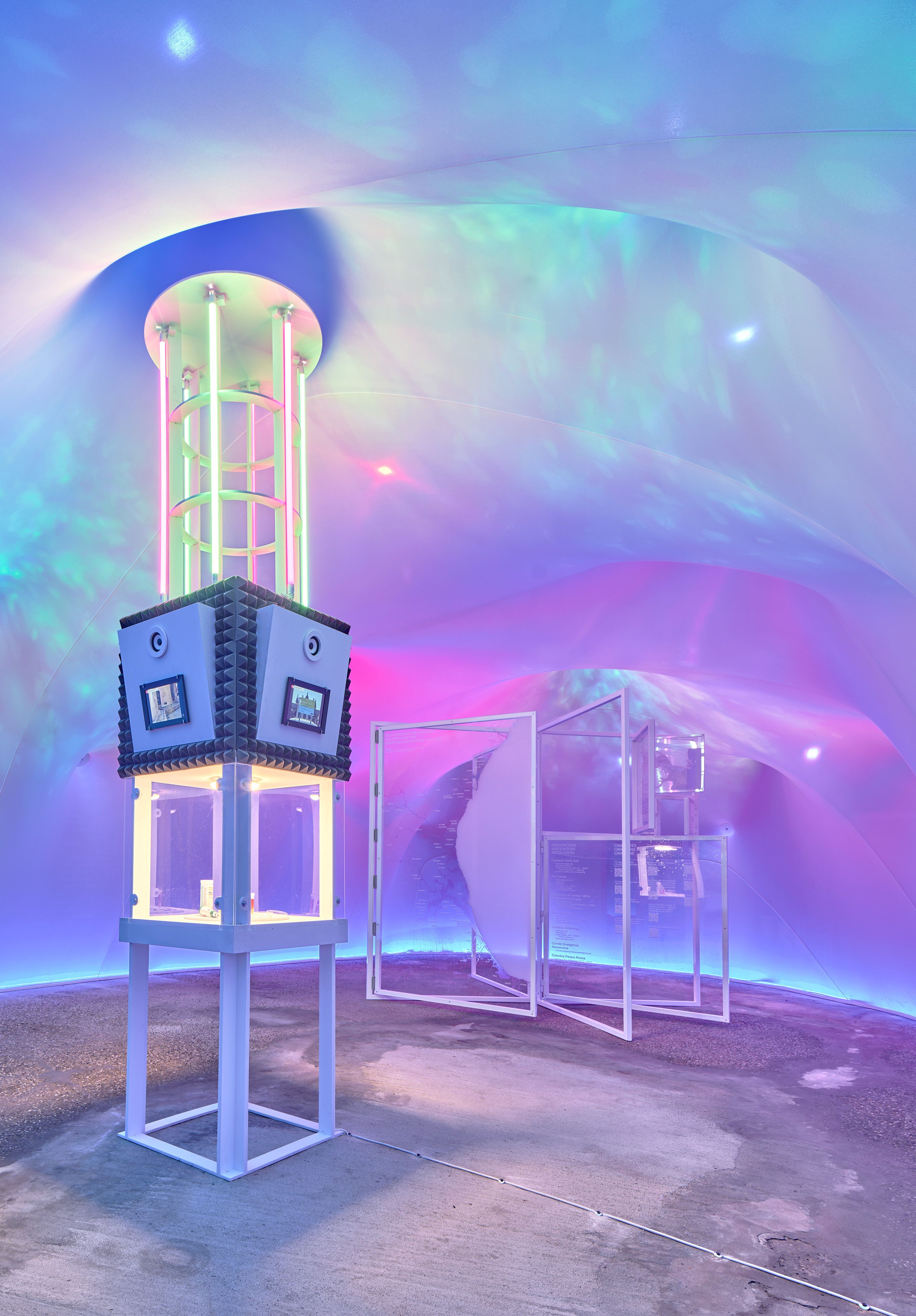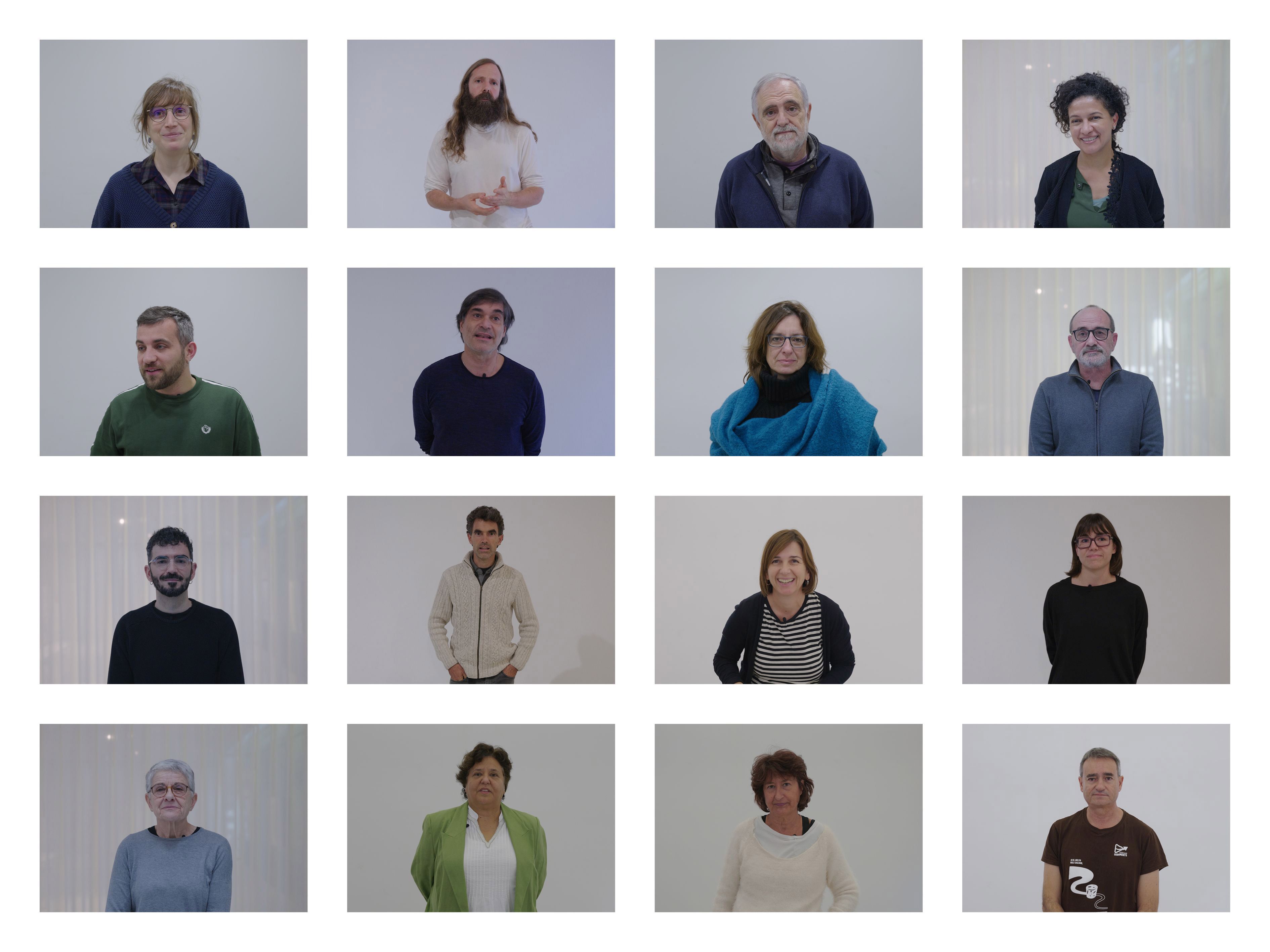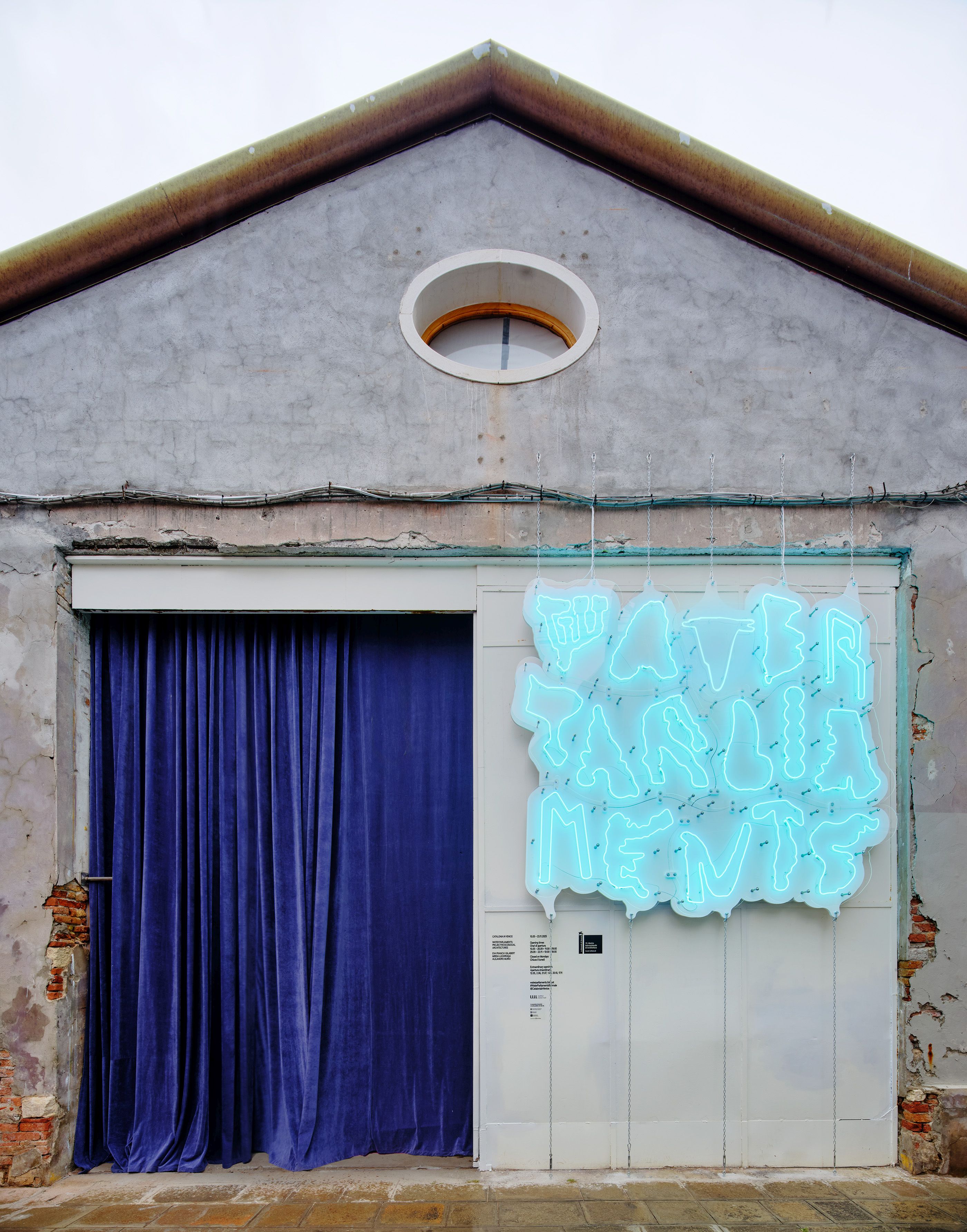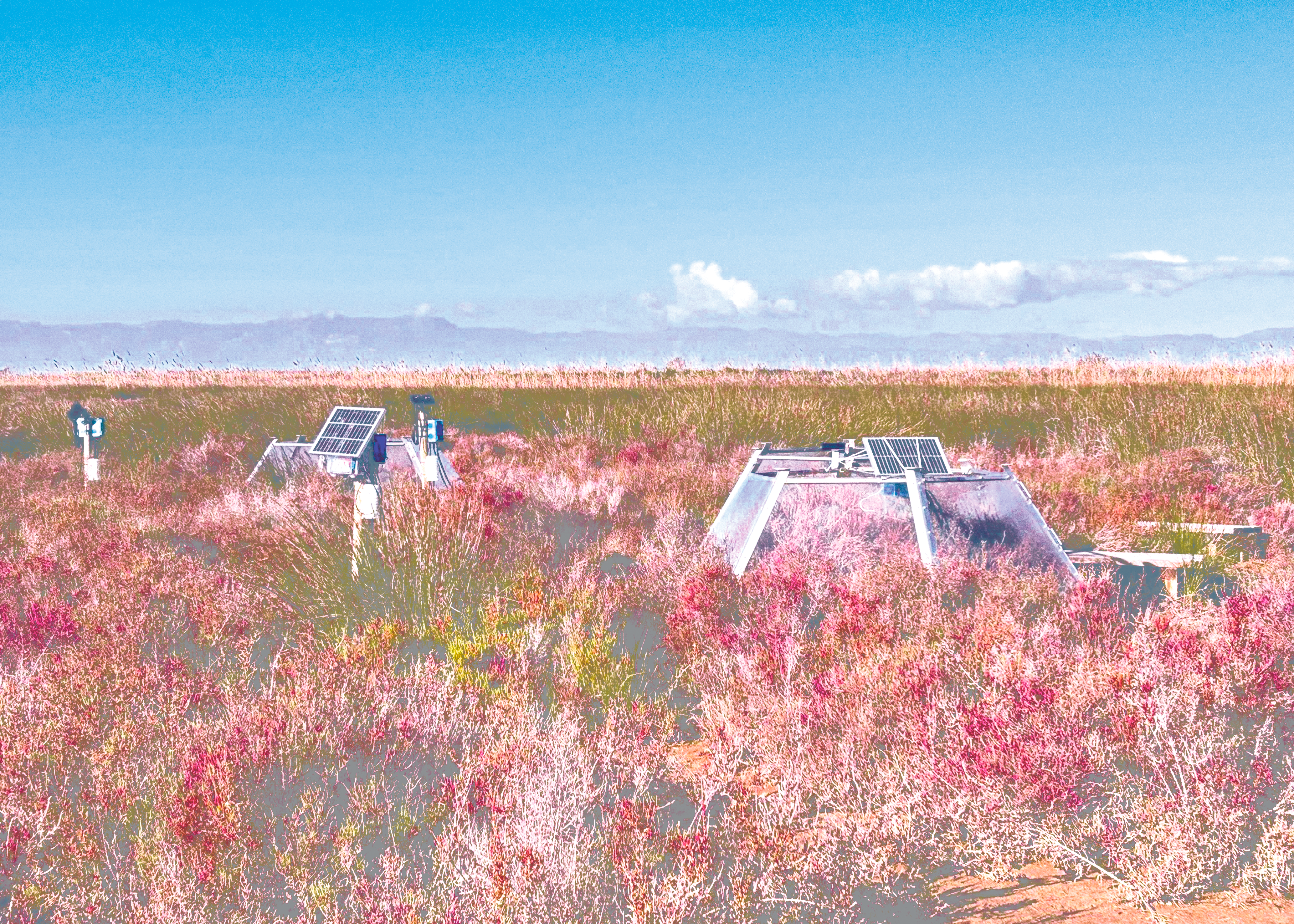
According to the United Nations, “the climate crisis is primarily a water crisis”; water resource management is the greatest planetary challenge in the short term. It is precisely in rivers, streams, canals, deltas, reservoirs and wetlands where our destiny as a viable species on this planet is decided daily. Water Parliaments: Projective Ecosocial Architectures aims to study, through architecture, the codependent relationships between humans and non-humans and the water systems on which they are sustained in order to propose hopeful future scenarios.
Droughts and other periods of water stress force us to reshape the frameworks of political and economic agendas. In this sense, beyond considering water solely as an object of exploitation, the project highlights how different bodies of water connect humans, animals, plants, minerals, architectures, stories, legends, languages and traditions, and construct cultural landscapes as specific as the Catalan, Valencian and Balearic contexts and interconnected with ecological challenges on a planetary scale.
Our proposal entails research that learns from the past, collecting, studying and enhancing local knowledge, and involving designers, activists, farmers, biologists and climatologists to provide updated insights on how to build an ecosocial balance that is as necessary as it is urgent. The Anthropocene is confronting us with a new paradigm that forces us to understand architecture no longer solely as the definition of the limits of what is exclusively human, but as a system of multi-species collaborative practices aimed at producing the necessary conditions so that life as a whole can take place.
Water Parliaments brings to Venice, the aquatic city par excellence, discussions on the sustainability of water resources as well as a commitment to architectural experimentation as a basis for imagining more fertile futures.
Eva Franch i Gilabert, Mireia Luzárraga i Alejandro Muiño
Institut Ramon Llull presents the project Water Parliaments: Projective Ecosocial Architectures, curated by Eva Franch i Gilabert, Mireia Luzárraga and Alejandro Muiño, at the Eventi Collaterali of the Venice Architecture Biennale 2025.
The proposal addresses the water crisis as an ecosocial, cultural and political crisis, and champions architecture as a tool for critical speculation and collective action.

The waters of territories such as Lleida, Valencia, the Balearic Islands, the Ebro Delta, the Pyrenees, Barcelona and other global locations converge, presented through seven projective architectures that symbolize conflicts and solutions: from urban data sources and sediment halls, to aquifer communities and speculative forest devices.
The project is based on Laboratories of Futures, community-engaged explorations developed throughout Catalonia, Valencia, The Balearic Islands and beyond. These local participatory processes, as well as others on a global scale, have produced a choral film, a series of Projective Architectures installations, the book 100 words for Water: A Vocabulary and the Atlas for Water Architectures, a living platform of water-ecosocial practices around the world.
The exhibition presents all the elements of the project and combines design, sensory experimentation and critical reflection. With programmed mists, translucent membranes and floating structures, it invites visitors to rethink their relationship with water as an active agent and subject of rights.
The project articulates the human and the non-human, technological and vernacular, global and local, to propose a new ecosocial governance of water from architecture.
Laboratories of Futures offers a methodological framework through participatory sessions with local communities, professionals and diverse actors from the Catalan, Balearic and Valencian territories. Each of the six local case studies presented emerges from active listening, knowledge exchange and interdisciplinary research, capturing diverse perspectives from agriculture, environmental sciences, local governance and cultural heritage. By highlighting local knowledge systems and the multiple voices involved, these labs exemplify inclusive and multi-species-sensitive approaches, which go beyond traditional disciplinary boundaries. This methodology places multidisciplinary practice at the heart of responding to urgent ecological realities, and understands architecture as a collective and speculative tool to imagine sustainable and just futures.
The laboratories brought together more than 100 participants in six sessions:
And they have given rise to seven installations, the Projective Architectures, which embody a critical response to the urgent ecological and social challenges related to water management:

Following the Laboratories of Futures, seven installations emerge — the Projective Architectures — that take center stage, materializing in full-scale models, interactive prototypes, and evocative sculptures.
Each installation embodies a critical response to pressing ecological and social challenges related to water management, articulating bold visions that intertwine speculative design, community activism, and environmental stewardship.
As tangible manifestations of collective wisdom, these installations vividly highlight the intricate interdependencies between human activities, territorial dynamics, climate adaptation strategies, and hydrological balance.
The installations address different but interconnected themes, from urban water governance and sediment management, to climate resilience, sustainable forestry and global food extractivism. These totems act as provocative instruments that promote urgent reflection, critical discussion and the active participation of communities, architects and policymakers.
All together they tell environmental stories and invite visitors to rethink their roles within ecosystems and to act collectively towards ecosocial futures.

I. Data Fountains
Barcelona is particularly vulnerable to climate change and faces increasing threats of drought and hydric stress. During droughts, empty fountains and parched gardens remind citizens of their individual responsibility in sustainable water management. However, essential elements of the city’s hydrological resilience—such as solidarity networks that manage aquifers between districts or mechanisms for maintaining water quality—remain invisible to the public, hindering a holistic understanding of urban water governance.
Barcelona introduces Data Fountains, an innovative expansion of its celebrated fountain heritage, merging advanced citizen-science tools with public infrastructure to deepen community engagement and enhance water management strategies.
Adding to Barcelona’s existing infrastructure, which includes 1,645 drinking fountains accessible to pedestrians and over 300 ornamental fountains enriching the city’s streets, avenues, and parks, Data Fountains will be strategically placed to provide real-time insights into local water conditions.
Each data fountain serves as an interactive station equipped with accessible DNA sequencing technology, empowering residents to actively participate in water quality monitoring. These stations allow users to analyze microbial communities, detect contaminants, and evaluate water infrastructure health.
Visually intuitive lights indicate immediate water emergency statuses, while integrated sound-alarm systems promptly alert communities to potential droughts, contamination risks, or public health concerns.
Beyond environmental monitoring, Data Fountains promote scientific literacy, turning everyday interactions into opportunities to better understand, predict and manage urban health challenges. By integrating rain data collection and sewage system analysis, Barcelona reaffirms its commitment to sustainability, transparency, and community-driven resilience, enriching the urban landscape with practical innovation and renewed environmental consciousness.
II. Sediment Saloon
When we modify a body of water, we not only affect the immediate area, but the entire hydrological system, profoundly reconfiguring its territorial dynamics. Dams, therefore, not only store water for consumption, irrigation or energy, but also act as physical and ecological barriers, trapping sediments essential for river ecosystems. These sediments, fundamental to biodiversity, soil quality and water health, are retained, altering critical ecological processes and triggering cascading effects on the landscape.
In response to these systemic disruptions, the Sediment Saloon was born, a contemplative library that embodies the passivity of administrations in the face of the actions necessary to preserve the Ebro Delta, in the southern of Catalonia.
This reflective library highlights the troubling passivity of administrative bodies regarding essential conservation actions. Visitors encounter a unique lounge area crafted from hydro-suction dredging pipes — technology symbolizing both ecological disruption and potential restoration to bring the sediments back to where they belong.
Above this lounge hang two cylindrical pools: one visibly swirling with sediments trapped behind the Riba-roja dam, the other vibrant with phytoplankton sustaining over 500 species inhabiting the delta. These pools represent the delicate balance between sediment movement and biodiversity, essential to maintaining the Ebro Delta’s ecological integrity.
Surrounding visitors are thoughtfully curated books and papers detailing the region’s history, biodiversity, and current ecological challenges, alongside scientific publications proposing viable solutions, including sediment bypassing techniques.
As sea levels rise and nearly half the delta risks submergence by 2100, the Sediment Saloon serves as both a wake-up call and a hopeful vision, highlighting innovative technologies capable of restoring ecological flows and reversing human-induced damage.
III. Hydric Doors
The increase and unpredictability of extreme weather phenomena due to climate change forces us to rethink social behaviors, architectural paradigms and urban planning regulations. It is necessary to redefine traditional understandings, and incorporate lessons learned from distant geographies that have long faced environmental extremes. In this context, Hydric Doors was born, an installation that directly responds to the catastrophic floods in Valencia and the deficiencies of traditional urban models in the face of the climate crisis.
Hydric Doors challenges the norms of urban planning, confronting the realities of climate change revealed by the devastating floods in Valencia. This installation features glass doors etched with fragments of building codes and flood zone maps, highlighting the forgotten vulnerability of current safety regulations and offering information on how to get involved in the Local Emergency and Reconstruction Committees, created by local communities in order to continue reconstruction efforts.
The doors have different hinge designs: one that only allows them to open outwards — following current Spanish safety regulations — and another with bidirectional hinges, symbolizing adaptability and dialogue. This design reflects on recent disasters, where outward-opening doors, supposedly safe, became death traps during floods.
This installation invites us to rethink technical standards, urban policies and flood risk management strategies, promoting a more resilient and sustainable city in the face of future water challenges. The installation serves as both memorial and manifesto, calling for sustainable urban ecosystems that integrate architecture, water management, agriculture, and community resilience to climate change.
IV. Pyrineucus-Eco-Hydrator
In recent years, the Pyrenees have experienced a significant increase in forest coverage, largely due to the abandonment of agricultural lands. More trees imply increased CO2 absorption and oxygen production, but this new scenario is simultaneously leading to a reduction in river flows, posing a threat to certain species and ultimately increasing vulnerability to climate change. The limited economic profitability of forests has resulted in neglect of their management by private landowners and public administrations.
Introducing the Pyrineucus-Eco-Hydrator, Catalonia’s future innovation at the heart of its National Forestry Plan. Designed to intelligently select and sustainably trim thirsty, water-intensive trees, this (speculative) system actively nurtures a robust ecosystem by gently planting resilient native species — oak, beech, and silver fir. By fostering biodiversity and reducing water demand, the Pyrineucus-Eco-Hydrator is reminding us of the importance of sustainable forestry in the Pyrenees.
Utilizing “cloud-milking” technology, it captures the ethereal moisture of fog to nourish young seedlings, ensuring healthy growth without depleting rivers and streams.
Embedded within the Pyrineucus-Eco-Hydrator’s structure are carefully designed wildlife sanctuaries, actively welcoming back keystone species such as the Iberian wolf, integrating them once again into the thriving forest ecology. Under its stewardship, and under its belly, controlled grazing practices return, maintaining open habitats, mitigating wildfire risks, and promoting rich biodiversity.
The Pyrineucus-Eco-Hydrator, a fictional and speculative species, is a future-focused strategy for climate adaptation, merging active forest management, agroforestry, and eco-engineering techniques. Its approach aims not only to ecological restoration but for a complex coexistence of technology and nature that is as agonistic as harmonious.
V. Denomination of Destination
The water that hydrates the soils nourishing vineyards in the regions of Lleida travels 20,000 kilometers to a supermarket in New Zealand where it is consumed. All resources utilized in one territory ultimately benefit a completely different one. Food extractivism by large global corporations is one of the contemporary ways territorial imbalances are created, occurring invisibly to our perception.
Five flags marks the scales and distances of global distribution — from the intimate radius of 500km, evoking local journeys of tomatoes, to the 1000km of regional apple landscapes, to the 5000km of continental pear exports, to 10,000km to major journeys of almonds to the expansive reach of 20,000km of grapes, touching the planet’s farthest antipodes. Through these symbolic banners — to be deployed in each field as part of a new law for radical transparency on water produce governance, the piece reveals the hidden voyage taken by each drop of water, nutrient, and ray of sun harvested in Lleida’s fertile fields, exposing the unseen threads linking local agriculture to distant tables around the globe.
The structure presenting the flags is crafted entirely from a single, continuous irrigation tube — an everyday material essential to Lleida’s agriculture — embodying the profound interconnectedness of all fields and water sources. As visitors walk among these flags, they are gently reminded of the silent, global journeys hidden within local produce, and are inspired to reflect on our collective responsibility to protect and sustain the resources nourishing both community and earth.
VI. Aquifer Communities
A bureaucratic and symbolic response to the crisis facing groundwater in the Balearic Islands — Mallorca, Menorca, Eivissa, and Formentera. Beneath every structure, from hotel swimming pools to private homes, lies an intricate and increasingly vulnerable network of aquifers, strained by decades of tourism-driven extraction and industrial agriculture. Through ceramic plaques displayed prominently in homes, hotel rooms, and public spaces, this initiative explicitly names and connects each location to its corresponding aquifer. These plaques act as material markers, tracing the otherwise unseen connections between individual water use and collective subterranean life.
Historically, the islands’ aquifers sustained a careful balance through traditional, local techniques such as wells and windmills. However, the explosion of tourism and modern agricultural practices since the 1960s has profoundly disrupted these water collectives, drastically lowering water tables and introducing pollutants like saltwater and nitrates. Today, over half of these vital subterranean communities have reached a critical state, compelling reliance on energy-intensive desalination solutions.
Aquifer Communities calls forth new collectives — residents, visitors, ecosystems, and policymakers — in a shared endeavor to rethink and reconfigure relationships to water. It goes beyond mere awareness, fostering active political engagement and care for these subterranean communities. In the face of intensifying climate disruptions, the initiative proposes an ethic of attention, shared vulnerability, and collective action, mobilizing new ways of co-inhabiting the islands with their hidden aquifer communities.
VII. Waters of the World
The nine spheres of this totem are part of the ongoing Atlas for Water Architectures initiative and accessible through the interactive web platform waterparliaments.org. Each of them presents a global case study that illuminates the often-invisible interconnections between architecture, water, and ecological justice.
Waters of the World ultimately seeks to cultivate a global network of Water Parliaments — inclusive spaces dedicated to ecological awareness, dialogue, and action.
We inhabit an era marked by profound environmental and social transformations that compel us to rethink how we live with water.
Addressing the connections between ecological sustainability, social justice and architectural innovation requires collaboration across diverse fields and practices. Atlas for Water Architectures is a central initiative of the Water Parliaments project, and is part of the Catalonia in Venice exhibition in 2025, the UIA World Congress of Architects 2026 Barcelona and the constantly growing online platform nurtured through an open call for projects from around the world.
This call invites architects, artists, scholars, independent researchers, activists, institutions, and organizations globally to submit existing, built, speculative, or future-oriented projects that interrogate and reimagine our collective relationship with water. Projects must explore water as a multidimensional entity—at the same time a vital ecological resource, a cultural symbol, and a key agent in shaping urban and rural landscapes. The call includes multiple categories: Architecture; Independent Agents; Institutions and Administrations; Private Companies; Symposia and Congresses; Publications and Archives; Technological Innovation; Festivals and Biennials, and Education and Community Awareness.
The initiative seeks to build a critical, international repository that foregrounds ecosocial perspectives, celebrating practices that challenge dominant paradigms and propose transformative visions for water management and architecture. .
The curatorial team, together with experts in the field of architecture, water management, sustainability, and other related disciplines, will be in charge of evaluating the nominations. The criteria for selection will be the contribution to sustainability, innovation, and social impact of the nominated projects, agents, and initiatives.
More information and submission of proposals: www.waterparliaments.org
